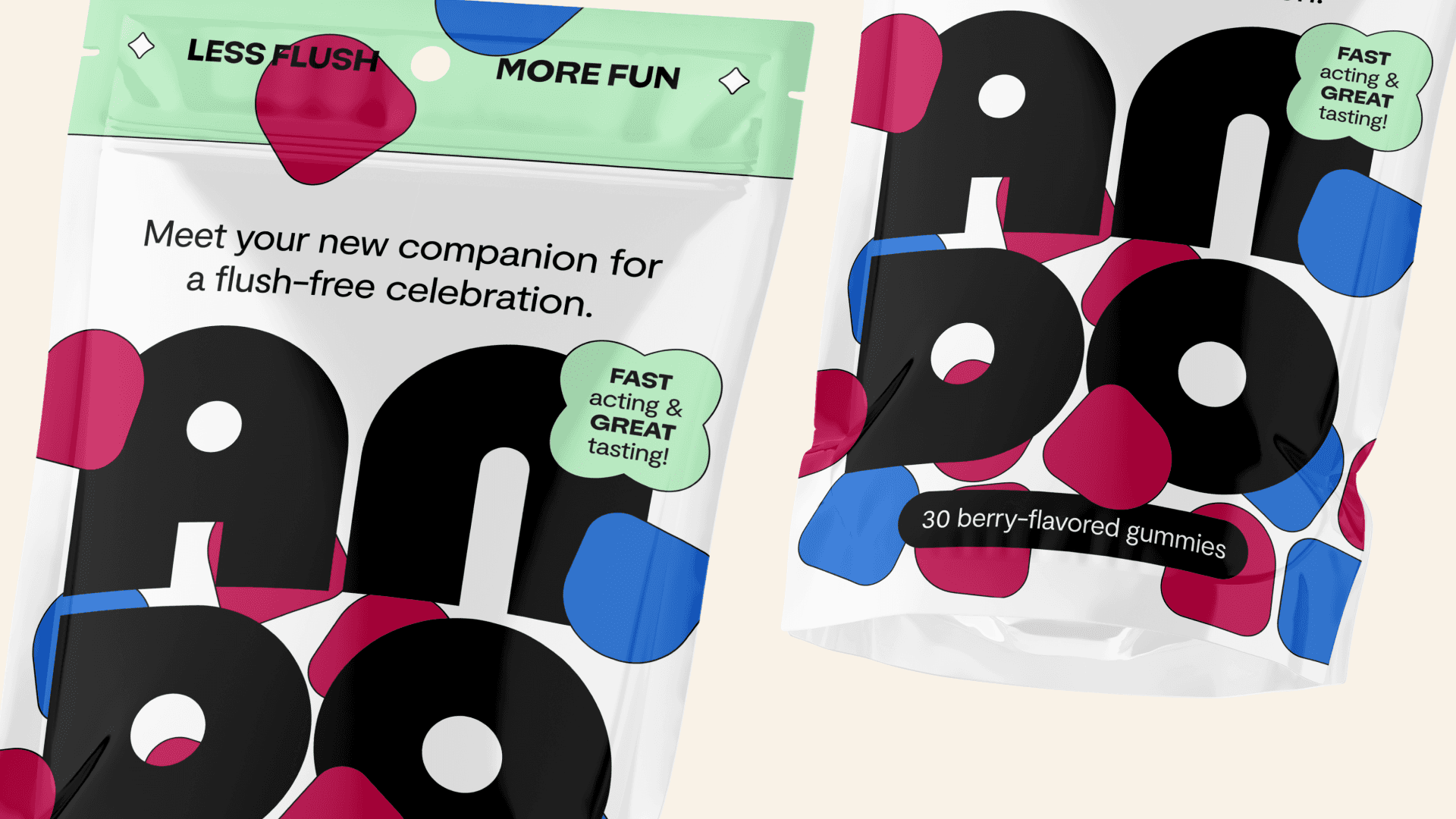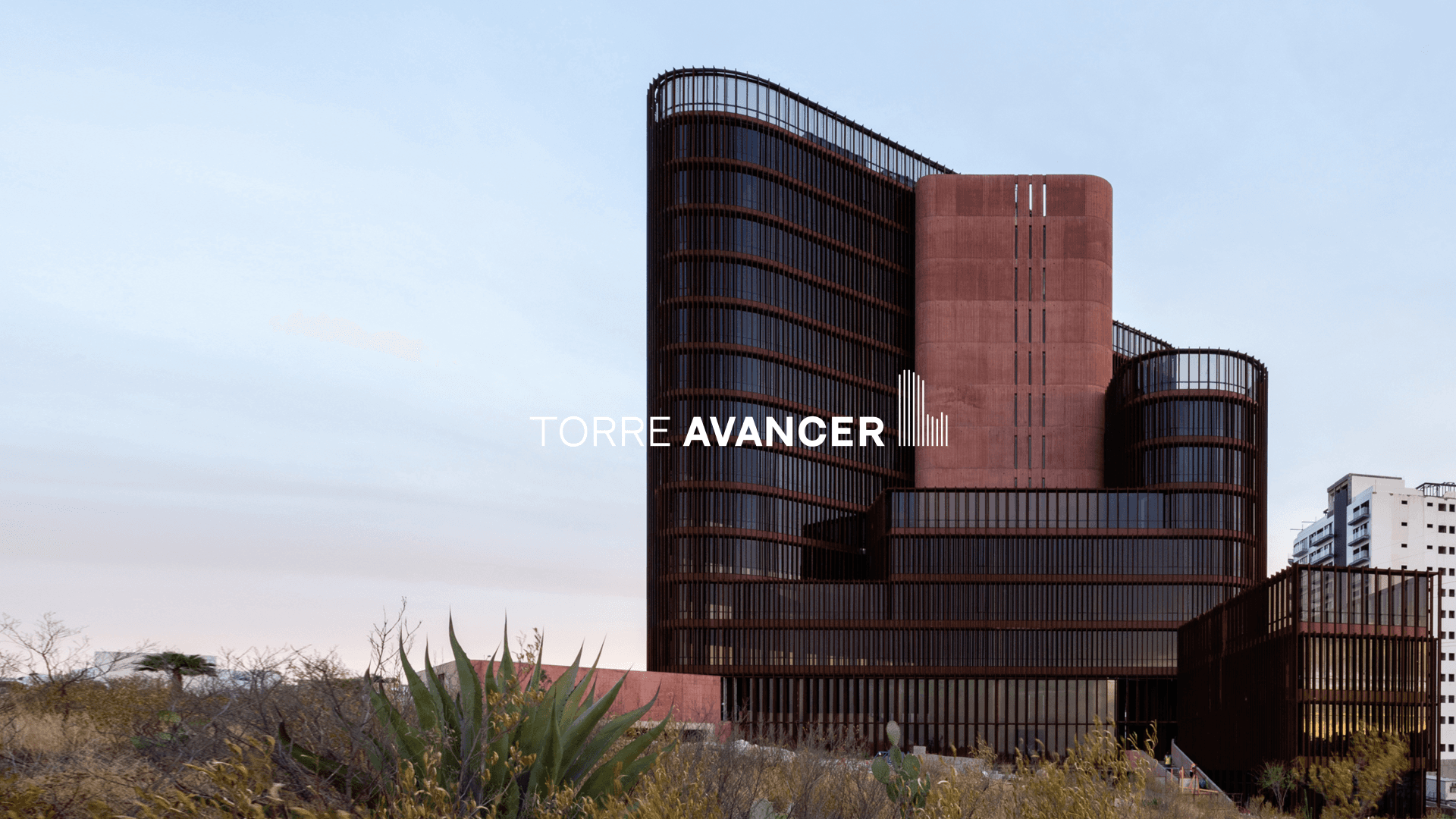10 Successful Rebranding Examples That Changed The Game
Need rebranding examples that drive real results? Lego's incredible story stands out. Their transformation ranks as history's greatest corporate turnaround, helping them surpass Ferrari to become the world's most powerful brand.
A successful rebrand goes beyond new logos or colors. Old Spice's daring campaign boosted sales by 125%, while Burberry's strategic shift drove revenue above £1.2 billion in 2009 - a first for the company.
Our analysis of 10 groundbreaking rebranding wins shows what companies can achieve when they dare to reinvent themselves. Dunkin' removed "Donuts" from its name, and CVS Health made the bold choice to stop selling tobacco products. These successful campaigns prove that smart brand development can revolutionize business outcomes.
Apple: From Near-Bankruptcy to Tech Dominance
Apple faced its darkest hour in 1996. The company's market share was dwindling and its stock price hit an all-time low. This pushed them to the edge of bankruptcy. This critical moment became the foundation for one of the most inspiring rebranding stories in business history.
The Strategic Vision Behind Apple's Rebrand
Steve Jobs returned as interim CEO in 1997 when Apple was losing USD 1.04 billion. His leadership turned the company around and generated a USD 309 million profit in just one year. Jobs focused on three key elements: core products, mutually beneficial alliances, and customer experience.
Jobs made a bold move to cut 70% of Apple's product line and reshape the management team. The company formed an unexpected alliance with their longtime rival Microsoft. This secured vital cash flow and software development commitments for Macintosh computers.
How Apple Simplified Its Visual Identity
The company's visual transformation started with its logo. Apple switched from its rainbow-striped emblem to a sleek, monochrome design that represented sophistication and state-of-the-art technology. This simpler look spread across all brand touchpoints and created a cohesive identity focused on minimalism and elegance.
Product Innovation as Brand Reinvention
The successful iMac launch kicked off Apple's streak of groundbreaking products. The company revolutionized seven different industries: personal computing, animated movies, music, phones, tablet computing, retail stores, and digital publishing.
The iPod's launch in 2001 marked a vital turning point. The introduction of iTunes and the App Store created a powerful ecosystem that boosted value through network effects. The iPhone's arrival in 2007 cemented Apple's position as an innovation leader.
Measuring Apple's Rebranding Success
Numbers paint a clear picture of Apple's transformation. The company grew from a market cap of USD 2.2 billion in 1996 to a USD 2.7 trillion powerhouse by 2024. Apple now serves over 935 million subscribers across its services, including iCloud, Apple Music, Apple TV+, and Apple Arcade.
Apple generated more than 40% gross profit from nearly USD 400 billion in revenue in 2022. The company's brand value soared from USD 241.2 billion in 2020 to USD 880.4 billion by 2023.
Apple's rebranding success comes from knowing how to keep a strong brand identity while pushing innovation forward. The company utilized mutually beneficial alliances, product innovation, and showed steadfast dedication to customer experience. This helped Apple not just survive but thrive, becoming one of the world's most valuable and influential brands.
Old Spice: Transforming a Grandfather's Brand into a Millennial Favorite
Old Spice, founded in 1937, faced a major identity crisis in the early 2000s. The brand had been a household name for decades but struggled to stay relevant as competition grew fiercer.
The Challenge of an Aging Brand Image
Old Spice's reputation took a big hit by 2006. Young buyers saw it as nothing more than a cheap, low-quality brand that only their grandparents would use. The brand's old-fashioned image threatened its market position badly, while younger men flocked to cooler brands like Ax.
The Viral Marketing Strategy
Old Spice teamed up with Wieden+Kennedy in 2010 to create the game-changing "The Man Your Man Could Smell Like" campaign. The first commercial with Isaiah Mustafa got 220,000 views just hours after release. The campaign kept its momentum going strong with about 100,000 new views every few hours.
The creative team took things further with an interactive response campaign. They made 186 personalized video replies to fans' questions on social media in just 48 hours. This quick-response approach turned into a soaring win that got 1.4 billion impressions in only two days.
Old Spice's Audience Expansion Tactics
Old Spice didn't just target adult men. The brand rolled out several smart moves to attract younger audiences:
Gave out free "High Endurance" samples in 5th-grade health classes across the country
Connected with sports fans through local marketing at high-school games
Added new product lines with different washes and sprays
The brand learned something interesting - women influenced half of all body wash purchases. So they crafted messages that spoke directly to female buyers, which helped them reach an even bigger market.
Sales Impact and Market Response
The numbers showed just how well the rebranding worked. Old Spice wanted a modest 15% bump in sales but got much more:
Sales jumped 125% in one year
Website visits went up 300%
Twitter following grew by 2,700%
Facebook engagement shot up 800%
YouTube subscribers doubled
Old Spice dominated 75% of all category conversations and became the top brand for men's body wash. The brand's journey from outdated to millennial favorite showed how humor, authenticity, and social media engagement can reshape a brand's identity completely.
Burberry: From Gangwear to Luxury Fashion Icon
167-year-old Burberry hit rock bottom in the early 2000s when its famous check pattern became linked to "chav culture" and football hooliganism. The situation became so bad that some places banned people wearing Burberry's check pattern.
Overcoming Negative Brand Associations
The luxury brand took quick action to shed its negative image. They pulled many products from shelves, especially their baseball caps. They also tightened control over licensing to stop knockoffs and protect their brand value.
Celebrity Partnerships and Brand Ambassadors
Burberry teamed up with big names to rebuild its image. Kate Moss led the way as one of their first major partners, which helped change how younger, style-conscious consumers saw the brand. The brand later added Marcus Rashford, Lucas Wong, and Zhou Dongyu to their ambassador lineup.
Burberry's Premium Positioning Strategy
The brand rebuilt its premium image through several key moves:
Improved their product development with more research, prototyping, and fresh designs
Created better store experiences with consistent brand imagery everywhere
Added digital features like virtual try-ons and better online shopping
Burberry launched "Burberry Forward" in November 2024 to reconnect with its roots. This plan balanced the brand's heritage with new ideas across all customer touchpoints.
Financial Results of the Rebrand
The brand's transformation paid off well. The early rebranding phase showed:
Revenue jumped to £2.8 billion with over 8% yearly growth from 2013-2017
Profits hit £260 million in 2017
Operating margins grew to 17%
Today, Burberry runs 235 retail stores, 143 concessions, and 54 outlets worldwide. Their latest plans show their focus on green growth, especially in outerwear and core products.
Burberry's comeback story shows how luxury brands can bounce back from major setbacks through smart repositioning. Their mix of premium positioning, celebrity partnerships, and digital innovation turned a struggling brand into a modern British luxury icon.
Starbucks: Beyond Coffee to Lifestyle Brand
Starbucks started a new chapter in 2011. The company's 40th anniversary marked a bold rebranding strategy that went beyond coffee. Through strategic collaborations and digital breakthroughs, Starbucks became a lifestyle brand focused on building meaningful connections.
Simplifying the Iconic Logo
The rebranding began with a major change to the famous Starbucks logo. The company removed the outer ring with "Starbucks Coffee" text, which let the Siren stand alone. This simple design showed Starbucks' plans to grow beyond coffee while keeping its brand identity in global markets.
Expanding the Brand Experience
Starbucks showed its Triple Shot Reinvention strategy in 2023. This strategy aims to raise the brand through specialized stores and faster renovations. The company plans to reach 55,000 stores worldwide by 2030, opening eight new locations each day.
The brand now offers more than just coffee through several new programs:
Specialized stores including pick-up, drive-thru only, double-sided drive-thru, and delivery-only locations
The Starbucks Art Prize, which offers USD 1.00 million to support visual artists who represent joy, courage, craft, and belonging
Five new architects chosen yearly to design unique stores across the network
Starbucks' Digital Transformation
Digital development is the life-blood of Starbucks' rebranding success. Digital channels now generate 22% of global sales. The company wants to double its global Rewards membership to 150 million members in five years.
Digital changes include partnerships with tech leaders:
Microsoft collaboration for generative AI capabilities
Apple products integration in Green Apron Innovation stores
Amazon One and Just Walk Out technology implementation
Creating the 'Third Place' Concept
Starbucks' rebranding centers on becoming the 'third place' - a space between home and work where people meet and connect. Community Stores bring this vision to life as vibrant hubs that reflect local culture and needs.
The company shows this dedication through several programs:
Partnership with Community Volunteers Foundation, backed by a USD 135,000 grant from The Starbucks Foundation
British Sign Language training for over 11,000 partners across 450 stores
Stores designed specifically for the Deaf and hard-of-hearing community
These strategic initiatives have helped Starbucks grow from a coffee retailer into a global lifestyle brand. The focus on digital breakthroughs, community participation, and unique retail experiences has created a brand identity that appeals to customers worldwide.
LEGO: Rebuilding a Toy Empire from the Brink
LEGO teetered on the edge of bankruptcy in 2004. The iconic toy manufacturer lost money in four out of seven years as sales dropped 30% in 2003 and another 10% in 2004. The company pulled off one of the most remarkable turnarounds in corporate history through strategic rebranding and operational changes.
Identifying Core Brand Values
New CEO Jørgen Vig Knudstorp led LEGO to find that there was a need to return to its foundational values: imagination, creativity, fun, learning, caring, and quality. The company chose to stick to these principles rather than chase market trends. "Only the best is good enough" became their guiding light—a steadfast dedication to excellence while welcoming innovation.
Product Line Rationalization
LEGO's revival hinged on streamlining operations. The company had grown to over 11,000 suppliers—almost double what Boeing needed to build airplanes. LEGO made several strategic changes:
Reduced the number of plastic resin suppliers by 80%
Cut production costs in half through strategic sourcing
Decreased the color palette from over 100 to roughly 50 shades
LEGO moved manufacturing facilities closer to key markets and set up operations in Eastern Europe. This served their European customer base, which factored in 60% of sales.
The LEGO Movie as Brand Storytelling
LEGO revolutionized its marketing approach in 2014 with The LEGO Movie. This creative branded content succeeded because:
Generated USD 500 million in box office revenue
Drove a 25% increase in sales the following year
Created opportunities for new franchise expansions
The film connected with both children and adults. It bridged generational gaps through storytelling that celebrated creativity and imagination.
Financial Turnaround Through Focused Rebranding
LEGO's complete rebranding strategy delivered remarkable results:
Inventory turns improved by 12% in 2005
Achieved profitability in 2005 for the first time since 2002
Saved approximately USD 100 million through supply chain optimization
LEGO now stands as the world's largest toy company with a market value exceeding USD 9 billion. Seven LEGO brick sets pass through checkouts every second—adding up to 600,000 daily. Research shows that LEGO investments outperform gold, stocks, art, and wine.
This success story shows how returning to core values and operational excellence can refresh a struggling brand. LEGO's focus on its strengths—creativity, quality, and innovation—transformed it from near-bankruptcy to industry leadership.
Airbnb: From Room Rental to Travel Experience Platform
Three friends set up air mattresses in their San Francisco apartment in 2008. This simple act became the foundation for a global phenomenon that changed the travel industry. Their concept grew from a basic room-sharing idea into a detailed travel platform valued at USD 86.5 billion within a decade.
The Bélo Symbol and Community Focus
Airbnb's rebranding took a significant turn in 2014 when they introduced the "Bélo" symbol. This unique logo combined four elements: people, places, love, and the letter 'A'. Designers conducted research across 13 cities and four continents and found that users valued being part of a global community most about Airbnb.
The platform's focus on community-driven growth created remarkable results:
Hosts earned more than USD 41 billion in the first decade
The platform reached 81,000 cities worldwide
Guest check-ins exceeded 300 million
Expanding Beyond Accommodations
Airbnb revealed ambitious plans to launch multiple new businesses each year in 2024. The company rolled out several key initiatives:
Co-hosting services that connect property owners with management partners
A new version of "Experiences" that focuses on unique, local activities
In-home services including personal chefs and mid-stay cleanings
The platform grew beyond traditional short-term rentals, with 17% of stays now lasting 30 days or longer. The property types expanded to include:
Vacation homes
Boutique hotels
Bed & breakfasts
Unique spaces
User-Generated Content as Brand Strategy
Airbnb made excellent use of user-generated content to build authenticity. Users created 77% of content posted on Instagram in the fourth quarter of 2016, which drove 80% of platform engagement. This strategy helped Airbnb's Instagram community grow by 13%, adding 172,000 new followers.
Effect on Global Market Expansion
Airbnb's growth reflects changing patterns in global tourism. The World Travel & Tourism Council projects travel to emerging economies will increase at twice the rate of advanced economies until 2030. The platform's strategic position has led to:
A presence in more than 191 countries
An increase from 9 cities with 100,000+ guest arrivals in 2013 to over 350 cities by 2018
A projected 400 million guests in emerging markets by 2030
The company has grown from a simple room-rental service to a detailed travel platform. This success story shows effective rebranding through community focus, service expansion, and strategic market development. Airbnb continues to create new features as it aims to become a platform that users interact with weekly, reshaping how people travel and experience destinations worldwide.
Dunkin': Dropping the Donuts for Broader Appeal
Dunkin' Donuts revealed a bold new brand identity at its Global Franchisee Convention in September 2018. The company dropped "Donuts" from its iconic name after 68 years in business. This change showed how the brand had grown beyond just selling donuts.
Market Research Behind the Name Change
Studies showed that drinks, especially coffee, made up 60% of Dunkin's yearly store sales. The simpler name made sense because customers already called the brand "Dunkin'". A follow-up survey revealed that 34% of customers quickly noticed the new name.
Visual Identity Transformation
Dunkin' kept important parts of its heritage through these elements:
The signature pink and orange colors from 1973
The classic Frankfurter font
Different logo sizes for various cup sizes
The brand refresh went beyond the logo and included new store designs and packaging. New concept stores featured modern additions like an eight-headed tap system for cold drinks. This setup let staff serve beverages like bartenders.
Product Diversification Strategy
Dunkin' took two main steps to reach more customers during this change:
The company added new espresso drinks and cold brew options to its menu. These additions led to double-digit growth in espresso sales. They also launched "Dunkin' Run," their first snack menu with $2.00 items, to boost sales during quiet hours.
Customer Retention During Rebranding
Dunkin' assured its loyal customers that their favorite products would stay the same. The company sells 2.9 billion donuts and Munchkins worldwide each year, making it America's top donut retailer. Each store continued to offer popular donuts and local favorites.
The new brand identity showed success through:
More customers using mobile ordering
Better digital experiences
A stronger presence in the breakfast market
Young customers were the main focus of this change. Gen Z and Millennials want flavored coffee and cold brew options. Research shows that 50% of Gen Z likes flavored coffee, and more than one-third regularly choose iced or cold-brew drinks.
Smart market analysis and careful planning helped Dunkin' change its image while keeping its loyal customers happy. This successful change turned Dunkin' into a drink-focused, grab-and-go brand ready for today's market.
Target: From Discount Store to 'Cheap Chic' Destination
Target changed retail forever when it evolved from a simple discount store into a seller of affordable, stylish merchandise. The company made a significant move in 1999 with its first designer partnership that changed how consumers viewed discount retail.
Designer Collaborations as Rebranding Tool
Target became a destination for available fashion through partnerships with renowned designers. More than 175 designer partnerships expanded the company's collaboration portfolio over two decades. Prestigious names like Michael Graves, Philippe Starck, and Isaac Mizrahi offered exclusive collections at reasonable price points.
Store Experience Redesign
Target showed an ambitious store transformation strategy in 2022. The retailer will remodel approximately 200 stores each year, and most locations will receive elements of their reimagined design starting 2023. The renovated stores showcase:
Improved lighting and natural elements
Native landscaping that reflects local communities
Modern team spaces with flexible configurations
Green features like EV charging stations
Differentiation from Walmart and Other Competitors
Target stood out with its unique "Expect More. Pay Less" promise that focused on delivering superior merchandise and a pleasant shopping experience. The company created an upscale shopping environment without compromising affordability, unlike Walmart's "Save Money. Live Better" approach.
Building a Distinct Brand Personality
Target's transformation into "Tar-zhay" came from its dedication to making great design available to everyone. The company's owned brand portfolio, valued at more than USD 30 billion, plays a vital role in maintaining this identity. Nearly 50 exclusive brands across major categories offer exceptional value with quality and style.
Target's rebranding strategy shows success through consistent growth metrics. Store remodels typically generate a 2-4% sales increase in the first year after renovation. The retailer's strategic investments produced remarkable results in 2023, and same-day services now account for more than 10% of overall sales.
Target aims to build more than 300 new stores in the next decade. The company focuses on improving its shopping experience through innovative initiatives that include evolving Target Circle and expanding owned brands across categories. These strategic moves strengthen Target's position as a destination for affordable style and retail innovation.
Mastercard: Simplifying for the Digital Age
Mastercard made a bold move in January 2019. The company removed its name from its iconic brand mark. This decision left only the interlocking red and yellow circles that had represented the company for over 50 years.
Logo Evolution for Digital Platforms
The visual elements underwent simplification to work better in digital contexts. Designers meticulously adjusted colors through extensive testing. The logo needed to stay vibrant against different backgrounds. The refined design kept three distinct hues:
Mastercard Red (RGB: 235/0/27)
Mastercard Orange (RGB: 255/95/0)
Mastercard Yellow (RGB: 247/158/27)
Brand Recognition Without Text
Market research showed remarkable results. An impressive 81% of consumers recognized the Mastercard Symbol without seeing the company name. This unique level of recognition gave the company confidence to drop the wordmark completely. Today, the interlocking circles need no textual support - more than 80% of people identify them instantly.
Adapting to Mobile-First Consumer Behavior
Digital technology now rules payment systems. Mastercard's visual identity has evolved to excel in mobile environments. The company's tokenization service handles more than 30% of global transactions. The digital presence grew through several key initiatives:
Click to Pay implementation for smooth online checkout
Payment passkeys with biometric authentication
Auto-enrollment features for digital wallets
Maintaining Brand Equity Through Change
Mastercard managed to keep its brand equity by sticking to consistent visual elements while accepting new ideas. The company's drive toward simplification paid off significantly. Digital payment tokens now outnumber physical cards in circulation.
The rebranding went beyond visual changes to include the entire payment experience. Mastercard created its sonic brand identity with unique sounds for payment confirmations and point-of-sale transactions. On top of that, it formed mutually beneficial alliances with digital banks and cryptocurrency platforms. These partnerships ensured its modern brand identity matched emerging payment technologies.
This soaring win in rebranding shows how a 50-year-old financial services company can adapt to digital transformation without losing brand recognition. Mastercard has positioned itself as a forward-thinking technology company in the global payments business by simplifying its visual identity and embracing state-of-the-art technology.
Netflix: From DVD Rentals to Streaming Giant
Netflix's rebranding experience shows how a simple DVD-by-mail service became a global streaming powerhouse. The company changed entertainment forever when it launched its streaming platform in 2007.
Pivoting the Core Business Model
Netflix's leadership made a bold choice to focus on streaming instead of its profitable DVD business. The company took an unprecedented step and excluded DVD employees from company meetings. This calculated decision showed their steadfast dedication to digital transformation, even though the DVD division brought in most of the company's profit at that time.
Content Creation as Brand Strategy
Netflix started creating original content in 2013 with hit series like "House of Cards" and "Lilyhammer". Evidence-based decisions led the company to invest about USD 5.00 billion each year in original programming. Creative professionals gained more control compared to traditional studios, which changed industry standards.
Global Expansion Through Digital Identity
Netflix arranged an aggressive international expansion between 2010 and 2015. The company grew from serving just the United States to operating in 50 countries. The platform now reaches more than 190 nations with 269.6 million subscribers worldwide. International streaming revenue now exceeds domestic earnings.
Overcoming Subscriber Resistance to Change
The platform excels at keeping subscribers loyal. Half of the subscribers who canceled in 2023 came back within six months. Netflix maintains an industry-leading monthly churn rate of just 2%, while competitors like Hulu sit at 4.1%. This soaring win comes from continuous improvements in content delivery and smart pricing adjustments.
Netflix now earns USD 33.70 billion in annual revenue, showing 14% growth year-over-year. The company has changed how people consume entertainment worldwide through technological advancement, content creation, and strategic global expansion.
—
Rebranding success stories show how companies can refresh their image to help struggling businesses and make market leaders even stronger. Each brand took its own path, but their trips shared some common elements.
Clear leadership vision made everything work. Apple focused on state-of-the-art design, LEGO went back to what made them special, and Burberry positioned itself as a premium brand. Customer experience remained at the heart of every change. Starbucks created its "third place" concept and Target brought in designer collaborations.
The digital world played a vital role in these changes. Mastercard simplified its symbol and Netflix jumped into streaming. Each company found its own way forward. Old Spice stayed iconic while attracting younger customers. Dunkin' kept what people loved even after dropping "Donuts" from its name.
The results speak volumes. Airbnb grew into an USD 86.5 billion platform. LEGO became the world's biggest toy company. Apple rose from near-bankruptcy to become a USD 2.7 trillion giant. Their achievements show that smart rebranding with strong execution can change a company's future completely.
These examples are a great way to get insights for any company that wants to rebrand. Real success needs more than just changing looks - it demands deep customer understanding, clear direction, and steadfast dedication to change.
—
FAQs
Q1. What are some notable examples of successful rebranding? Some successful rebranding examples include Apple's transformation from near-bankruptcy to tech dominance, Old Spice's shift from a grandfather's brand to a millennial favorite, and Burberry's evolution from gangwear to a luxury fashion icon. These companies successfully repositioned their brands, expanded their target audiences, and significantly increased their market value.
Q2. How did Dunkin' successfully rebrand itself? Dunkin' successfully rebranded by dropping "Donuts" from its name to emphasize its expanded menu offerings beyond just donuts. The company retained its iconic colors and font while modernizing its stores and introducing new product lines. This strategy helped Dunkin' appeal to a broader audience and position itself as a beverage-led, on-the-go brand.
Q3. What role does digital transformation play in rebranding? Digital transformation plays a crucial role in modern rebranding efforts. For instance, Mastercard simplified its logo for better visibility on digital platforms, while Netflix pivoted from DVD rentals to a streaming service. Companies like Starbucks and Target have also integrated digital innovations into their rebranding strategies to enhance customer experiences and stay competitive in the digital age.
Q4. How can a company maintain brand loyalty during a rebranding process? To maintain brand loyalty during rebranding, companies should preserve core elements that resonate with customers while introducing new aspects. For example, LEGO focused on its foundational values of creativity and quality during its turnaround. Similarly, Dunkin' assured customers that popular menu items would remain unchanged despite the name change. Effective communication and gradual implementation of changes can help maintain customer trust.
Q5. What are the key factors that contribute to a successful rebranding? Successful rebranding often involves a clear strategic vision, focus on customer experience, adaptation to digital trends, and balancing heritage with innovation. It's crucial to understand customer needs, have strong leadership direction, and commit fully to the transformation. Measurable results, such as increased sales, improved brand perception, and expanded market reach, are also important indicators of rebranding success.





















